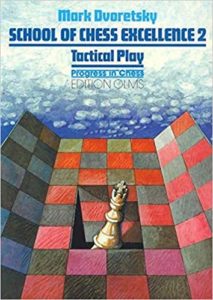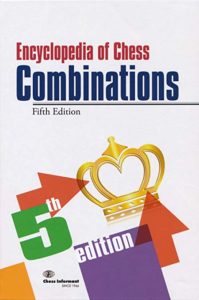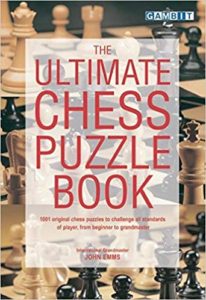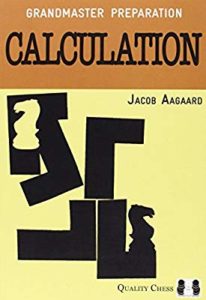6 Books to Study Chess Tactics
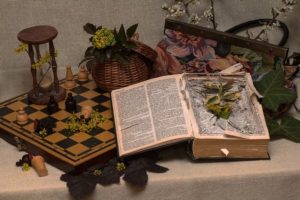
In this article I will discuss with you a set of books that I believe are the best ones to work through in order to improve one’s tactical and calculation ability.
Getting better at calculation is probably the skill that requires the highest effort in chess. The reason is simple: a LOT of practice and exercises are required. Chess tactics and calculation is the one skill that you cannot improve with passive learning. You need a steady and active learning training, based on a daily routine.
Don’t get scared and run away though! Even if you have a full-time job like me, you can still make time for improving your tactical skills, as long as you are ready to put in the work and the effort.
I am going to briefly discuss with you my favorite books to study chess tactics. I will explain why I think each of these is a great training companion in your chess journey!
As a preliminary note, please know that this article does NOT contain any affiliate link. SoftwareChess.com is a independent blog that does not work with any affiliation program. In other words, I don’t make a cent out of my recommendations, whether you buy these books or not!
School of Chess Excellence 2: Tactical Play (Mark Dvoretsky)
Mark Dvoretsky (1947 – 2016) is considered by many the best chess author of all times. In fact, even this very article of mines, limited to tactical training, contains 2 books of him. However, you should really go on Wikipedia and check the entire list of his publications, to see if anything appeals you.
School of Chess Excellence 2: Tactical Play is a little gem. Dvoretsky presents a lot of examples, in order to show tactical patterns, and train the eye to recognize combinatoric opportunities over the board.
Now, I really want to stress the point about “training the eye”. Many many times, non-professional players miss the tactical shot not because they are not able to calculate it, but simply because they don’t even see the idea.
This goes along with the “Candidate Moves” principle, that says: when you are given a position you should first enumerate all the moves that make sense, and then start analyzing them one by one.
In my opinion, this is not strictly related with tactical training (although it is, a bit). To improve your tactical eye what you need to do is literally to SEE a lot of positions and discover the patterns that exist in it. You can do it in a lot of ways:
- analyze your own games with a engine. Even online blitz games! I wrote an entire post about this idea.
- get a collection of games of your favorite player and re-play all of them over the board. If they are commented (like in a book) that’s even better. Focus your attention not only on the tactical shots that happened in the games, but also on the variations that did not happen. Often they did not happen because of some hidden tactical misses by the players.
- keep reading this article … !
In Tactical Play, Dvoretsky also gives a lot of practical advises for developing a player’s ability to calculate. Indeed, there are many things that you can/should do while playing a game in order to stay alert tactically. Dvoretsky method was proven successful by many of his students (first class GMs), so make sure to grasp all information you can.
Last, but totally not the least, the book contains a number of exercises. Now, do yourself a favor: do NOT skip those.
Exercising is the most “annoying” part of reading a chess book, and yet is the most profitable. Is the “active” part of your training and therefore the most important, because it’s when the brain gets to do some real work, rather than “just” listening or reading.
If you are a believer in the hard-work concept, then know that it applies to chess too. Working hard on each part of the game, like the calculation ability, will lead you very far and increase your Elo. Take the exercises proposed by Dvoretsky one after the other! Good luck!
Secrets of Creative Thinking (Dvoretsky, Yusupov)
This is another book by Dvoretsky, in collaboration with one of his most well-known students, Yusupov, who has been a elite-GM for many years.
The reason why I recommend this book for chess tactical training, is that it represents the other side of the coin. Calculation is, on one hand, a very “mechanical” mental process (the type of process where software are very good at!). I am talking about the exact calculation you do in your head, such as “I move this, he moves that. Then I capture here, …”.
On the other hand, calculation is a creative effort. You must be creative in order to spot and to create tactical possibilities in your games. In this sense, tactical training is almost an art.
In particular, in Secrets of Creative Thinking, Dvoretsky goes deep into methods to develop a player’s intuition. Intuition is a crucial factor when playing a chessgame, for a number of reasons. Intuition:
- guides your decisions, your “Candidate Moves” selection process
- helps you saving a lot of time on the clock
- keeps you alert of tactical possibility
- unconsciously helps you avoiding tactical blunders.
In this book, Dvoretsky follows the successful recipe to first provide a great selection of examples that help us understand how strong players effectively handle complex positions. Then, he propose a set of carefully chosen exercise, meant to improve the reader’s intuition.
Once again, the exercise section is the most important in my opinion. I am not saying it’s gonna be easy, nor I am saying that it will be fast. On the contrary, it will take quite some time for each exercise, but eventually results will come.
Encyclopedia of Chess Combinations
This massive book is a product of Chess Informant, the famous company that since decades provides extremely high quality chess collections, including the ultra-famous Informant.
The Encyclopedia of Chess Combinations is a great reference book with more then 3,000 combination explained (yes, more three thousand chess combinations!)
Speaking about tactical patterns, I would argue that you don’t need anything else than this Encyclopedia. If you are willing to put in the time to study this book from the first to the last page, then you will have a very comprehensive knowledge of tactical combinations in chess.
But what does “to study” a tactical combination actually mean? It seems a counter-intuitive word for a combination. Either you see it, or you don’t. Either you calculate it, or you don’t. Right? Not quite.
Here is how I recommend you to study chess tactics. Apply the following steps every time you see a diagram or a puzzle.
- If you are working on your computer, turn the engine OFF. If you are using a book, hide the solution.
- Give yourself a maximum amount of time. Depending on the difficulty of the puzzle choose a number from 5 to 10 minutes.
- Start working on the position:
- enumerate the candidate moves
- calculate each of them, starting from the most forcing one (or the one you think it would be the most). WRITE DOWN on a piece of paper every line that you spend a bit of time on
- Do NOT use the chessboard, nor the computer. Everything must happen into your head only
- When the time is over, just stop calculating, no matter where you were in the process. Just stop.
- Now turn the engine on, or look at the solution given on the book. Walk through the solution comparing it with the variations that you’ve previously written down. Did you find all tricks? What did you miss?
The other big question is how to interpret the true solution (or the engine top-line) when it’s different from the solution we gave. This is how I recommend you to do it:
- Identify all the ideas behind the variations. Ideas such as undefended pieces, double attacks, exposed kings, passed pawn, etc.
- Did you get the idea right? In other words, was your solution based on the same idea as the true solution?
- Now let’s go deeper. Using a chess software (engine) walk through the true solution move after move, check and understand why that is the single best move. You must check the alternatives and understand why they are not so good. The engine will help you in doing so.
- So, what did you miss? How deep were you able to calculate? And how fast?
I think it could be very beneficial to create your own database of positions that you did NOT solve correctly. Why these, you might ask?
Once more, the answer is that I want your brain to work in a repetitive way. You must iterate over and over all those positions, until you get them right. Each time you arrive to the correct solution, remove that position from the database. And… stop when the database is empty!
If you decide to follow this process for the entire Encyclopedia, then it will surely takes several months of training. The moments when you are bored, or think about giving up, just know that you’re not alone! This is a very common tactical training. More practically, you should select a subset of the encyclopedia to start off, for example the first 100 combinations, and work through those!
If you complete your “study” of the encyclopedia in this way, you will have for sure the tactical strength of a FM/IM. For sure!
The Ultimate Chess Puzzle Book (Emms)
The Ultimate Chess Puzzle Book is a collection of tactical puzzles and exercises written by IM John Emms.
Unlike the previous books recommended in this post, this one is more of a beginner book. And yet I would suggest it to anyone.
On this matter, I would like to recall a famous sentence of Mikhail Tal, former World Chess Champion, who said that he often looked at beginners books in order to remember himself that simple things matter in chess!
My point in suggesting this book is that it really provides a wealth of puzzle positions to test just about every facet of your tactical skills. Therefore, it will strengthen your tactical vision by making it broader.
This recommendation of mines is in line with another tip that I want to give you about tactical training.
Sure, you can have the best books ever written on the subject, like the ones I am mentioning in this article. And sure, you should really work through them as hard as you can, almost memorizing each diagram if you can!
At some point though, you will have to leave books aside and jump into the real word, or rather the real chessboard. When you do that, is your training period over? Not at all!
You must keep your tactical vision sharp, with a continuous practice and on a daily basis. Basically, calculating variations must become like a normal activity for you. You brain must get used to calculate variations, and it must be able to do it like a second nature.
How can you achieve this? My suggestion is to use the LiChess mobile app, that you can install for free in your cellphone. Then every day give yourself 15-20 minutes to solve puzzles. It can be wherever, on but bus going to work or in your lunch break, just to give two examples.
With the Lichess mobile app is extremely easy to do this. Open the app, click on the Menu icon (top-left), then scroll down the menu till the “Learn” section and there click on “Training”. You will be prompted with a puzzle, and each time you solve one the app will give you another one. The app chooses the difficulty of the puzzle based on your score so far, so try your best to get more difficult exercises over time!
Chess Puzzle Book (John Nunn)
GM John Nunn is quite famous as he has been three times World Champion in solving chess puzzles. Yes! there is a special World Championship dedicated to the players who specialized in solving problems, and Nunn has won it three times.
Therefore it’s not a surprise that he’s also written by a bit about puzzles. In particular, I like his Chess Puzzle Book.
The best feature of this book is that you are put into a real-game scenario. Nobody tells you, in a real game, “Hey this is the moment to search for a combination!”. Actually, if someone did then chess would be much easier of a game.
Not knowing the current position’s evaluation, nor being aware of tactical possibilities is one of the main practical problems in a real game. So, Nunn’s book is based precisely on this fact.
Each of the given puzzles is not of the type “White to move and win”. This would be a very big hint, and in a real game nobody tells you “Hey now you have the winning move, find it!”. The situation is completely different in fact.
In a over-the-board game there are just dozens of possibilities at each move, and when you see a tactical continuation you don’t know if it’s good, bad, a trap, or just an hallucination!
In this sense, Nunn’s puzzles are perfect to train. Each challenge is very direct: “Choose a move”, exactly like you would be doing in a real game. There are 300 puzzles and there are also hints to help you on your way, if you need them.
Overall, Nunn’s Chess Puzzle Book is one of my favorite books to study chess tactics, and perhaps the first/second I would recommend.
Grandmaster Preparation: Calculation (Aagard)
Jacob Aagard is without doubts one of the best chess author of these days, and I would suggest you to take a look at the list of his books, not just this one.
“Grandmaster Preparation” is in fact the title of a 5-books series that he has written, and it’s just outstanding. These are quite complex, but throughout books, each centered on a different subject.
“Calculation” is perhaps my favorite book about training one’s own ability in calculate long variations and spot brilliant tactical ideas. It’s my number-1 choice as book to study chess tactics, for several reasons:
- all challenges are taken from real games
- each chapter refers to one theme, such as Candidate Moves, Traps, etc.
- solutions are given!
You might find strange that this book contains very few actual “paragraphs”. Basically the entire book is a collection of puzzles, and each chapter is introduced by a few pages (4-5 in average), that explain what is the theme of the chapter and offer 1-2 commented examples. After that, you’re thrown into the challenge field.
Conclusions and other resources
In this post I discussed a central topic towards chess improvement, that is improving chess tactics ability. This involves both calculation and creativity.
I have told you what are my favorite books to study chess tactics, but I hope that you also got interesting suggestions about how to actually practice in a efficient and effective way. Stay strong because only with a lot of practice (and quite some time) you’ll see the improvements. But they will come, have trust in yourself!
Have fun!!
